Key takeaways:
- Album art analysis enhances the listening experience by connecting visual elements to musical themes, emotions, and historical contexts.
- The visual representation of an album can generate anticipation, resonate with the lyrics, and reflect the artist’s identity and ethos.
- Key elements like color, typography, and hidden details contribute significantly to the overall impact of album art and its narrative.
- Tools like high-quality image viewers and social media discussions enrich the analysis, fostering a communal exploration of album art’s meanings.
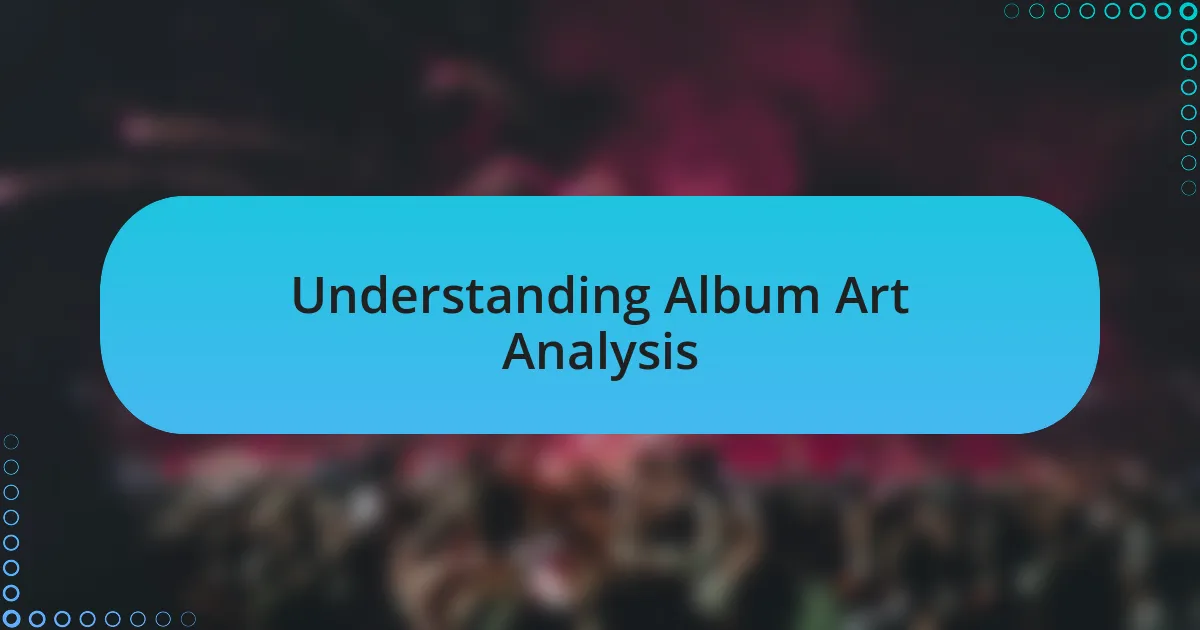
Understanding Album Art Analysis
Album art analysis goes beyond just appreciating a beautiful image; it’s about diving into the emotions and concepts that the art conveys. I remember the first time I held a physical album in my hands—the intricate details and vibrant colors drew me in, making me feel connected to the artist before I even hit play. Can you recall a time when an album cover changed how you perceived the music?
When examining album art, I often think about how the visual elements relate to the themes of the music itself. For instance, the choice of colors or the imagery can evoke certain feelings or memories, which can significantly deepen the listening experience. Have you ever noticed how some covers feel like a visual representation of the sound? This connection between visuals and audio can sometimes create a narrative that adds layers to the entire album.
I find it fascinating how each piece of album art can tell a story, reflecting the artist’s journey or the mood of the time. Consider how an album cover from the ’70s carries a very different vibe compared to something released today. This historical context enriches our understanding and appreciation of the music, don’t you think? Each analysis can unlock hidden meanings, revealing how the artist wishes to be perceived, and transforming the listener’s experience into a unique exploration of creativity.
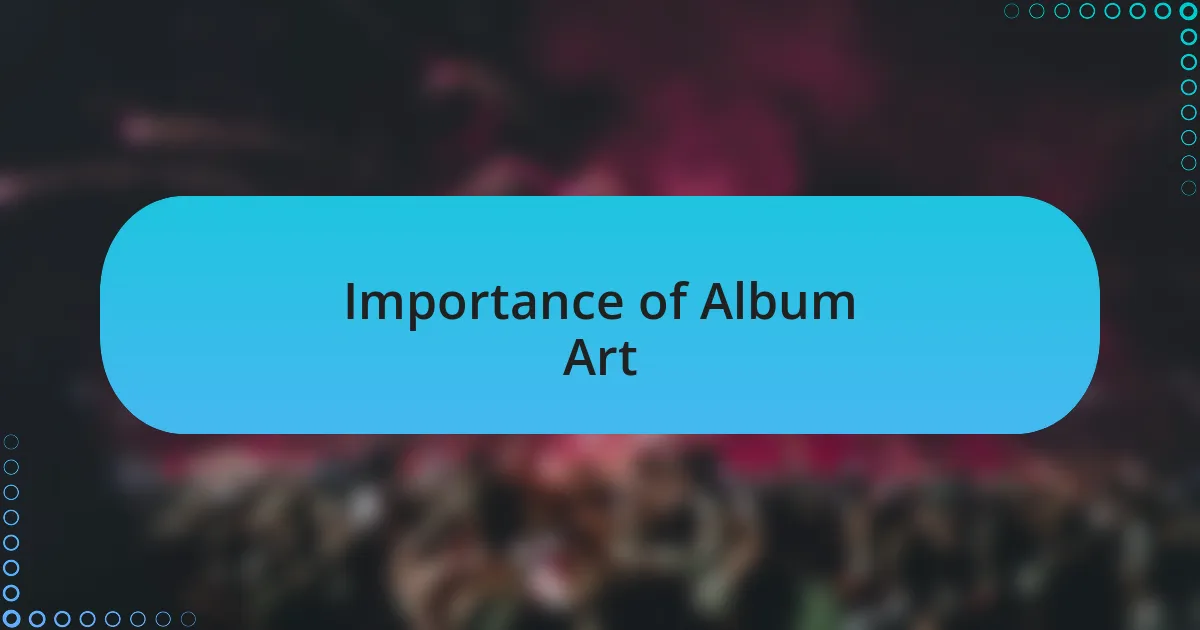
Importance of Album Art
Album art plays a crucial role in setting the scene before the music even starts. I recall flipping through records at a local shop and being drawn to specific covers that simply demanded my attention. It’s interesting to think about how an image can generate anticipation or even nostalgia, shaping my expectations of what I’m about to hear. How often do we choose an album based solely on its cover art?
The visual representation can often parallel the artist’s message, creating a powerful synergy between audio and visual elements. I’ve experienced moments where the art resonates perfectly with the lyrics, making the songs feel like a cohesive story. When an artist carefully crafts their album cover to match the themes found in the music, it deepens the listener’s connection. Have you noticed how impactful this relationship can be?
Moreover, album art serves as a signature for the artist—a way to communicate their identity or ethos without uttering a word. I vividly remember a band’s debut album cover that was raw and unrefined, perfectly matching their DIY spirit. It made me appreciate the authenticity of their work. This unique expression can ignite a sense of belonging among fans, reinforcing community ties that are often found within musical circles. Isn’t it remarkable how a single visual has the power to foster connections?
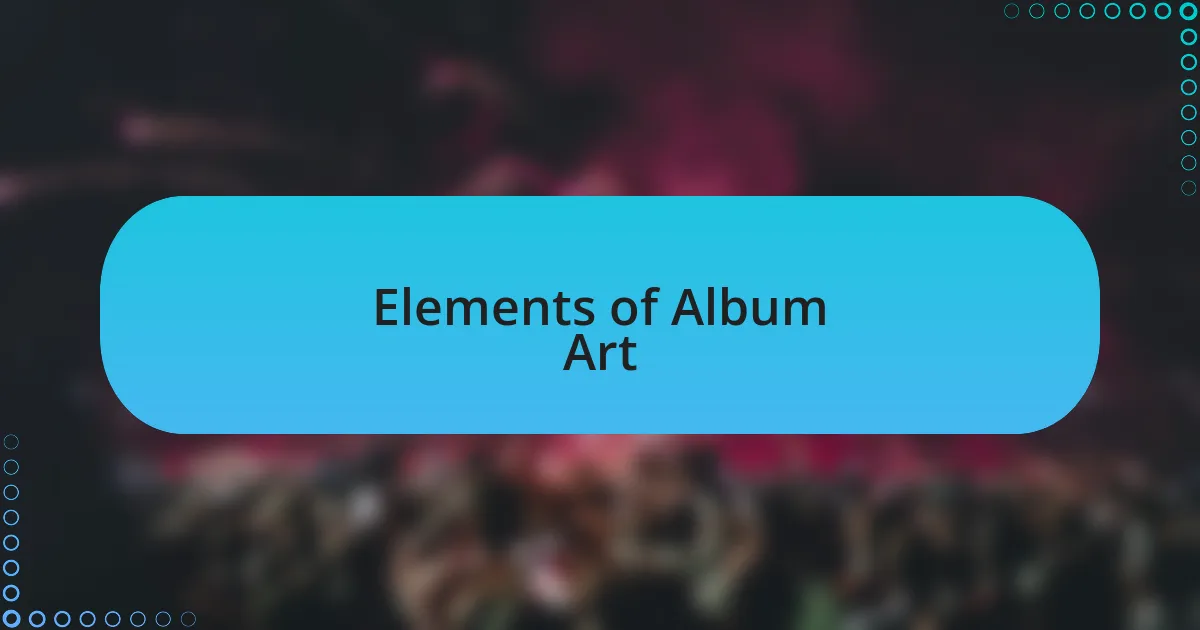
Elements of Album Art
Album art is a canvas that often captures a moment in time, marrying visual art with musical emotion. I remember staring at a striking black-and-white cover of an iconic album, transfixed by its haunting imagery. It evoked a sense of longing that mirrored the sound within; the art felt like a visual echo of the music’s melancholic notes. Isn’t it fascinating how a simple image can evoke such deep feelings?
Color plays a huge role in conveying messages through album art. When I see vibrant hues splashed across a cover, it often signals an energetic experience, setting my expectations high. In contrast, muted tones tend to suggest introspection or an exploration of darker themes. I consider how these visual choices shape my mood before I even press play. What do you notice when vibrant colors meet quiet sounds?
Typography is another critical element that shapes the overall impact of album art. The font style can express an artist’s personality; take, for example, a bold, jagged typeface that screams punk rock energy. In my experience, the font often evokes a sense of urgency or nostalgia, making the art more memorable. Have you ever chosen to listen to a record simply because the text spoke to you just as much as the imagery?
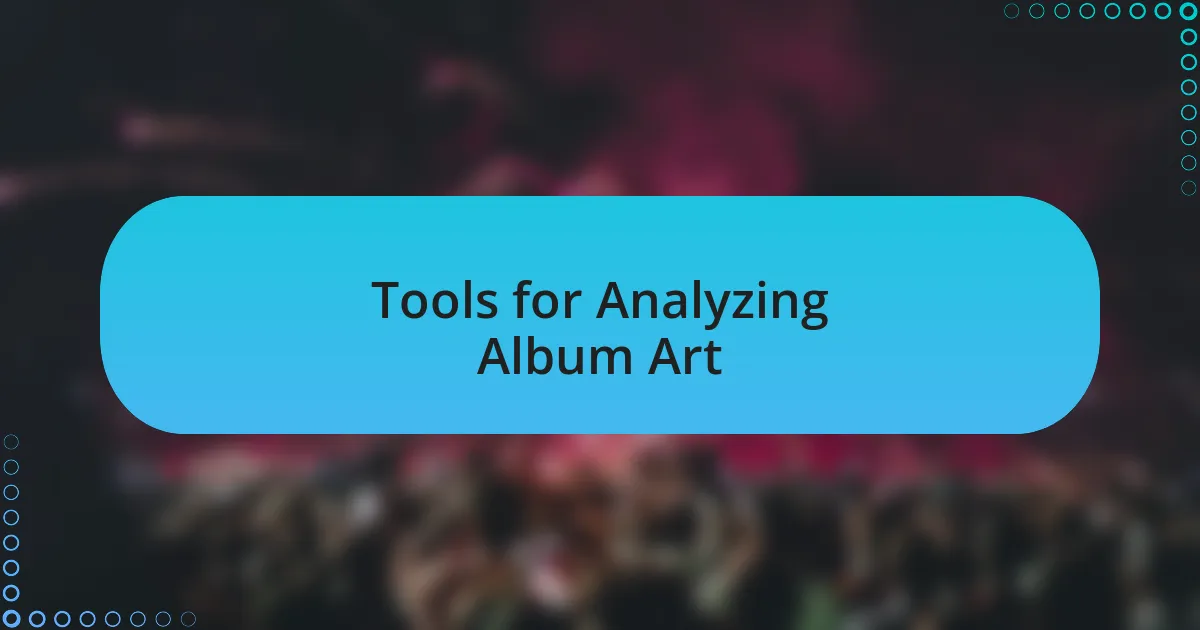
Tools for Analyzing Album Art
When I delve into analyzing album art, one of my favorite tools is a high-quality image viewer that allows me to zoom in on intricate details. I often find myself entranced by small elements that tell a deeper story—like hidden symbols or textures that tie back to the artist’s vision. Isn’t it amazing how a tiny detail can completely shift your understanding of the overall piece?
Another resource I frequently turn to is online design software, which enables me to manipulate and compare different album covers side by side. By adjusting brightness or contrast, I can uncover subtle choices that aren’t immediately apparent. I vividly remember using this tool to compare two seemingly similar covers; one was bursting with energy while the other whispered secrets, highlighting the artist’s intent in ways I hadn’t noticed before. Have you ever unmasked a hidden layer in art that changed how you felt about the music?
Finally, the power of social media platforms can’t be overlooked. I often browse through fan discussions and critiques where others share their interpretations and insights on album art, adding layers of meaning I might have missed. Engaging with fellow enthusiasts can turn the analysis into a communal experience, reminding me that art is ultimately about connection and shared emotions. Have you joined a conversation that reshaped your perspective on a favorite album’s visual presentation?
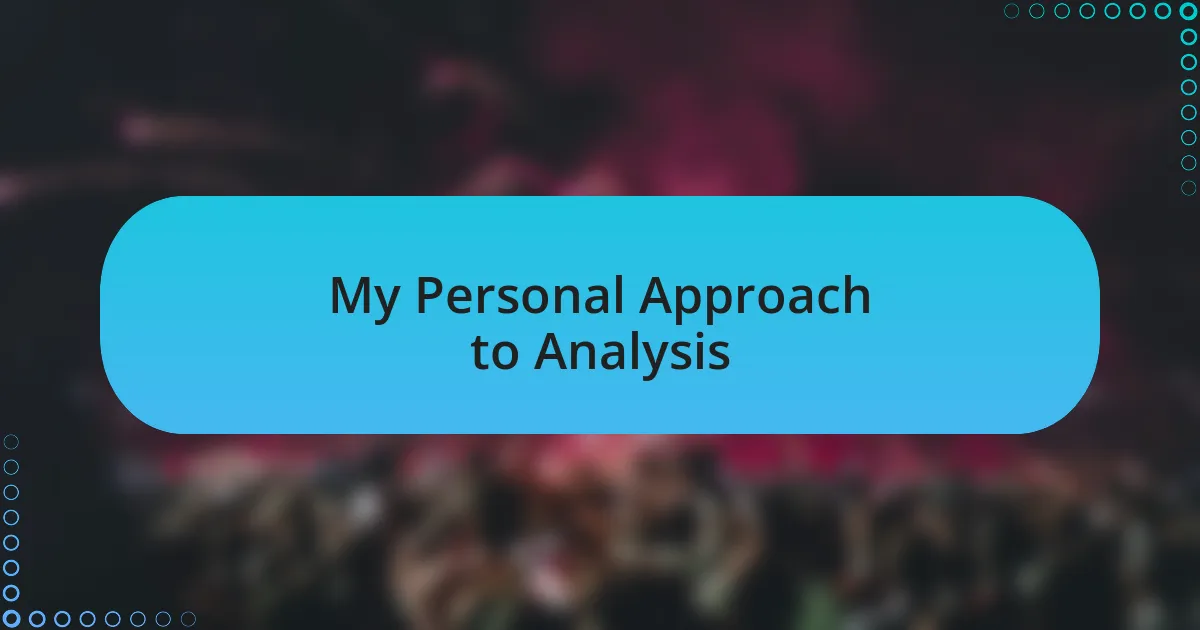
My Personal Approach to Analysis
When I approach album art analysis, I like to start with my emotional reaction. I find it fascinating how a cover can evoke feelings even before I hear a note. Recently, I came across a cover that struck me with nostalgia, instantly transporting me back to a sunny summer day in my youth. Isn’t it incredible how visuals can trigger such powerful memories?
Next, I carefully consider the colors being used. For instance, I remember studying a cover that was predominantly dark but bordered with vibrant hues. This contrast not only caught my eye but made me ponder the relationship between light and shadow in the artist’s message. Have you ever thought about how a color choice might reflect the mood of the music?
Finally, I think about context—the time period, the genre, and the artist’s background. When I analyzed a classic rock album recently, I found the imagery deeply reflective of the social issues of its time. It struck me how art can serve as a historical document, capturing a moment in cultural history. Have you ever considered the historical narratives that album art can tell, beyond just the music?
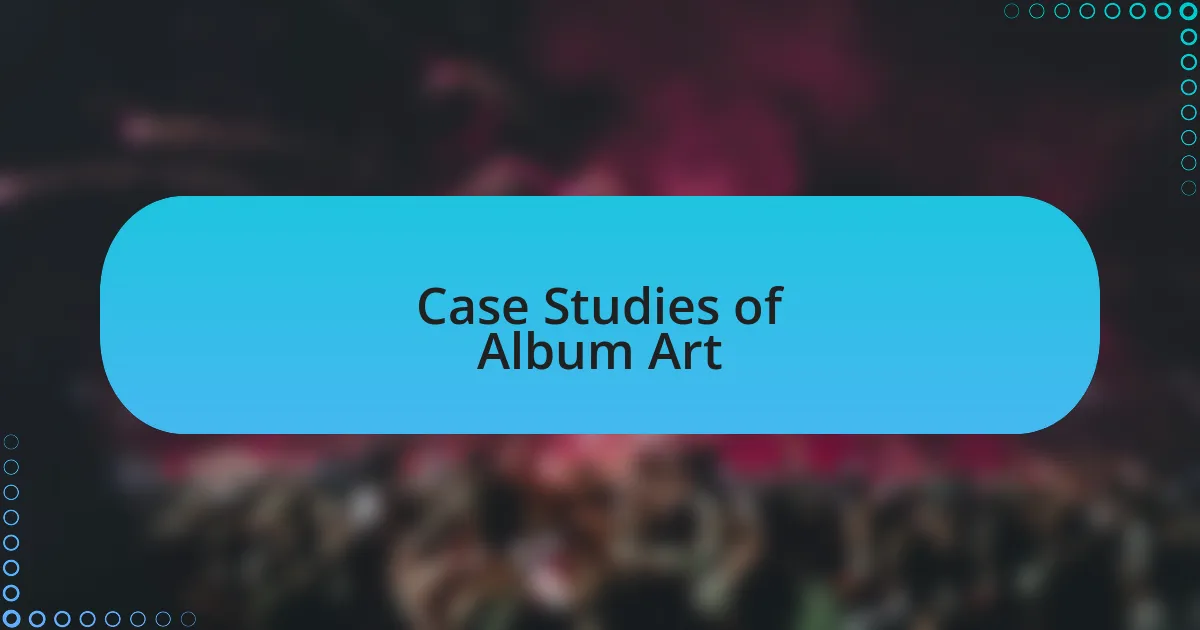
Case Studies of Album Art
Examining the album art of Pink Floyd’s “The Dark Side of the Moon,” I was struck by its geometric simplicity and the iconic prism. The artwork perfectly encapsulates the album’s themes of light, energy, and the human experience. I often ask myself—how does a single image hold such multi-layered meanings that resonate across generations?
Then I ventured into Fleetwood Mac’s “Rumours.” The cover, featuring the enigmatic couple in a tender pose, draws me into the emotional turbulence that permeates the album. As I reflected on their personal stories, I felt a connection to the music, realizing that the art enhances the listening experience. Have you ever found that an album cover deepens your appreciation of the songs it represents?
Lastly, I analyzed the bold and chaotic visual of Kanye West’s “Yeezus.” It’s raw and confrontational, much like the music itself. This disconnect intrigued me, making me wonder—can jarring visuals serve to highlight or offset the sound? The starkness of its approach challenged me to think about how artists use cover art as a form of statement, often leading to a dialogue that goes beyond the auditory experience.